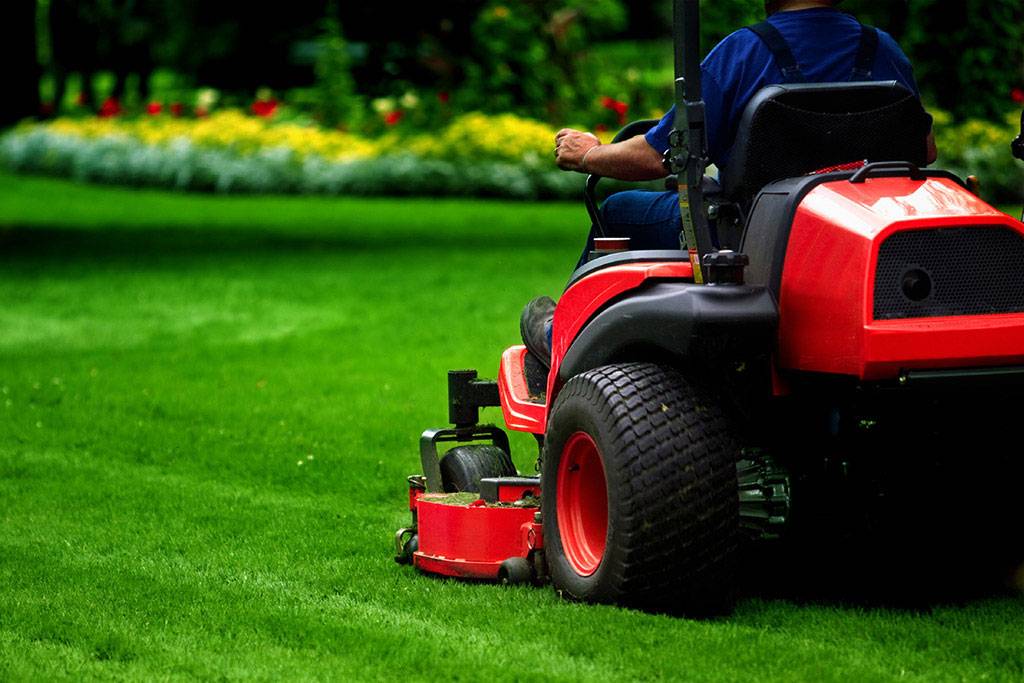Riding mowers simplify the task of mowing, enhancing both efficiency and speed. When the machine refuses to start, it poses a significant challenge. Often, users perceive starting problems as complex issues and refrain from attempting any self-fixes.
The various starting components within your lawnmower initiate several actions when you start the machine. Among these, the trademark clicking sound, attributed to the solenoid, is one noticeable outcome.
Lack of this clicking sound, however, doesn’t exclusively pinpoint solenoid issues; other faults may be responsible. This article delves into the reasons why your John Deere mower may fail to start, providing practical do-it-yourself solutions to address the problem.
Demystifying the Starting Process of Riding Mowers
Understanding the starting mechanism of a riding mower enhances comprehension of the issue when faced with a “lawn tractor won’t start, no clicking” scenario.
Riding mowers commonly feature four-cycle engines, fueled either by gasoline or diesel. Gasoline-powered models rely on a spark plug for combustion, while diesel-powered ones operate differently. In most lawnmowers, the engine generates the necessary power for transmission, drives, and various components such as wheels and blades.
Essentially, the battery supplies the essential electrical charge to power critical starter components like the motor and solenoid. The ignition button serves as a trigger, initiating the starter system’s function. Precisely, the ignition activates the battery, directing current to the starter motor via the solenoid, enabling the engine to start.
During a typical start, the audible clicking sound indicates the proper functioning of the components and the impending start of the machine. However, if the riding mower remains unresponsive, there may be an issue. Alternatively, the lawnmower might produce the starting sound without initiating, depending on the underlying problem.
Unraveling the Mystery of Your Non-Starting Riding Mower
Experiencing difficulties starting your machine could be attributed to various factors. A common culprit is a depleted battery. Other potential reasons for start-up failure include sensor malfunctions, a defective solenoid, the brake pedal not being pressed, a faulty ignition switch, or loose internal connections in your riding lawnmower.
To address the issue, the initial step is to diagnose and identify the problem. Disassembling the machine and examining each component individually is necessary. Once you identify the culprit, proceed with the appropriate repairs.
Easy Fix for John Deere Mower: No Clicks, No Start Woes Solved

Tackling the “John Deere won’t start, no clicks issue on your mower” involves examining the battery, control module, starter solenoid, and safety functions. Running these fixes ensures a solution.
1.Battery Inspection
Because it powers the starter and every other electrical part of the mower, the battery is vital.
If the mower fails to start, a faulty battery is a likely culprit. Battery issues are often easy to address.
Examine the battery for breaks or leaks, covering minor ones but replacing the battery for major openings. If the battery appears functional, use a multimeter to check its voltage; a working battery should read 12V. Recharge a low-voltage battery, and if it won’t charge, opt for a replacement.
2.Control Module Inspection
Control modules, integrated by manufacturers into lawnmowers, play a crucial role in managing start commands. Initiated by the ignition switch, the module relays the start/stop signal to the starter via the solenoid.
Should these operations fail to execute flawlessly, the lawnmower may resist starting, indicating potential issues with the control module.
Determining whether the control module is the source of trouble can be done through a wiggle or main-fuse test. The wiggle test involves gently moving the two wires connected to the control module to identify any damage or loose connections. Alternatively, the main-fuse test entails removing and inspecting the main fuse.
To assess the module’s continuity, a multimeter can be employed. Once its operational status is known, the appropriate course of action can be decided. In the event of a significant control module malfunction, seeking assistance from a qualified technician is recommended.
3.Ignition Switch Check
If the ignition switch is defective, it cannot send the necessary signal to start the engine. Therefore, inspect for loose connections or breaks in and around the switch.
Use a multimeter to measure the resistance of the ignition switch. The contacts of the ignition switch must complete a circuit from the B to the S terminal for a successful start. Measuring the resistance helps determine if the switch is functioning correctly.
A properly functioning switch should register a resistance of 0 ohms, while a faulty one will show infinite resistance. If you identify a fault, attempt feasible repairs on the ignition. Should the problem continue, you might want to replace the switch?
4.Solenoid Check
The starter solenoid collaborates with other vital components of your lawnmower’s starting system, ensuring optimal machine functionality. Its primary function is to deliver the necessary current to the starter motor, enabling the mower to initiate. As previously mentioned, the distinctive clicking noise during startup is attributed to the solenoid.
If the solenoid is malfunctioning, you have the option to repair or bypass it. However, it is advisable to replace the component if it is faulty. Whether you opt for a DIY solenoid replacement or enlist the expertise of a qualified technician, the next section will guide you through the process if you choose to undertake the solenoid replacement yourself.
To Change the Solenoid on Your Lawnmower:
- Open your mower’s hood or seat and locate the battery. Disconnect the battery terminals.
- Take off the battery, checking for defects and even testing the battery voltage if it’s been a while since your last check.
- Cut the wires that link the machine to the solenoid’s terminals.
- Use a screwdriver to remove the mounting and tab.
- Carefully take out the faulty solenoid and replace it with your new, compatible one.
- When the lawnmower’s hood closes and the required cables and terminals are reconnected, you should be prepared.
Correctly reconnecting the cables is crucial to prevent further issues. Wear protective gear during repairs. If uncertain about your skills or unfamiliar with the mower’s internal components, consult a qualified technician.
5.Verify Safety Features.
Lawnmowers come equipped with safety features controlled by switches, integral to their design. When certain safety features are active, your lawnmower might not operate correctly. Checking and rectifying these safety functions is a straightforward process if you know where to inspect.
Key safety features to examine in your machine include the battery connection, blade switch, brake pedal switch, and others.
Before jump-starting the engine, ensure you press the brake pedal. If it fails to function, troubleshoot the brake detector. A brake detector reading of 0 ohms indicates normal functionality, while an infinite reading suggests a malfunction.
6.Verify that you are executing it correctly.
Lawnmowers typically come with specific starting procedures that must be followed for optimal performance. Failing to adhere to these routines can result in difficulty starting the machine. To ensure proper starting, it is crucial to check and confirm the fitting of all necessary fluids and connections.
Before starting the engine, sit securely on the seat and engage the brakes and levers, including the parking brakes, gear, and throttle. Place the gear in neutral (“N”) and set the throttle to the choke position. The throttle regulates the speed of the mower blades and is essential for a smooth engine start. Look for markings like a turtle and a rabbit on the throttle, making it easy to identify.
After completing these steps, start the machine and perform the required after-start processes, such as returning the throttle to the “fast” position. Keep in mind that your lawnmower may have additional starting procedures not covered here, so it’s crucial to consult the owner’s manual for specific insights on starting the machine.
In conclusion
Understanding the starting system of your John Deere mower simplifies seemingly intricate issues. Familiarity with the components and their functions enables you to swiftly address any starting challenges.
Preventing starting problems on your lawn tractor hinges on regular, manufacturer-recommended maintenance. Adhering to these guidelines minimizes the likelihood of encountering issues. Additionally, ensure that any replacement parts for your mower are compatible.
When resolving starting issues, prioritize safety by wearing protective gear and following precautionary measures. Keep the work environment free of children and pets, and use reliable equipment. If troubleshooting proves challenging, revisit the instructions or seek assistance from a qualified technician. Additionally, make sure to address any potential Cub Cadet issues that may be contributing to the problem.

